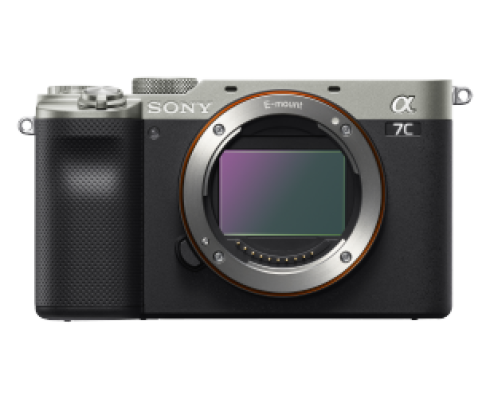
Sony Alpha camera supported by Sony SDK (Software Development Kit)

Sony Alpha camera supported by Sony SDK (Software Development Kit)
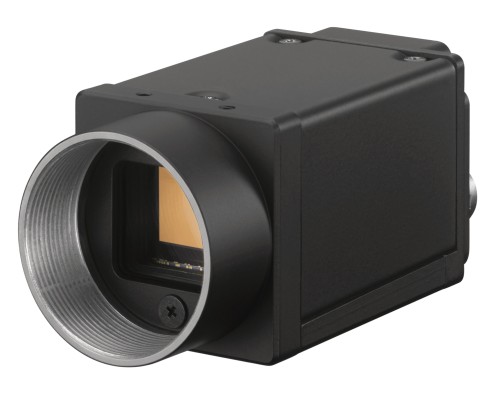
Digital Video Camera using various interfaces (USB, Gigabit Ethernet, Camera link)
With dimensions of just 56mm x 64mm x 125mm and weighing 439g, these cameras are compact and lightweight. Delivering an industry-leading 50dB image signal-to-noise (S/N) ratio, alongside wide dynamic range, they have Noise Reduction (NR) and Visibility Enhancer (VE) functions integrated into them. They can be supplied with a choice of digital interface included (HDMI, MIPI and LVDS). An operational temperature range covering -5°C to +60°C is supported, plus an extensive range of humidity levels (from 20% to 80%).
Each FCB 9500 Series camera features one of the company’s 4.17MP 1/1.8-type STARVISTM CMOS image sensors. The units have several important attributes that set them apart for competing imaging solutions - and these are driving customer demand. Let’s look at these attributes in more detail.
1. Exceptional image stabilisation capabilities
One of the key differentiators of the FCB 9500 Series cameras is the blur suppression they are able to achieve. This is thanks to the advanced image stabiliser technology that has been incorporated.
Using acceleration data from the built-in gyro sensor, the camera is able to conduct electronic image stabilisation. The larger correction area available means that any vibrational and rotational movements can be compensated for - so that elevated performance is assured even in the most challenging of application settings. It means the pitch, yaw and roll based movements can all be accommodated within the image sensor area.
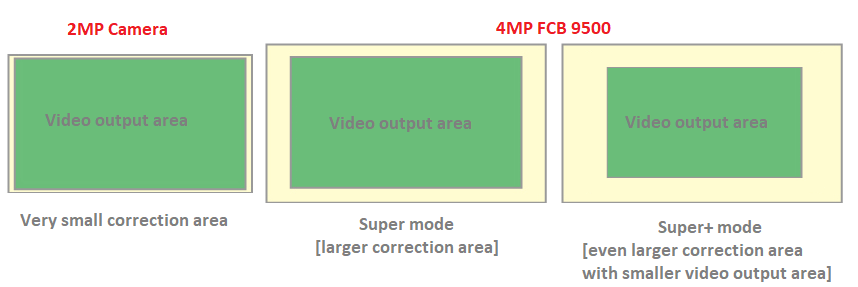
Caption: FCB 9500 image stabilisation capabilities
There are two image stabilisation modes that can be used, depending on how acute the vibrations are likely to be. With Super mode, a wider correction range is made available than is possible with conventional image stabilisation mechanisms. An even wider correction area is assigned in Super+ mode, so that more intense vibrations can be suppressed and the effects of blur mitigated.
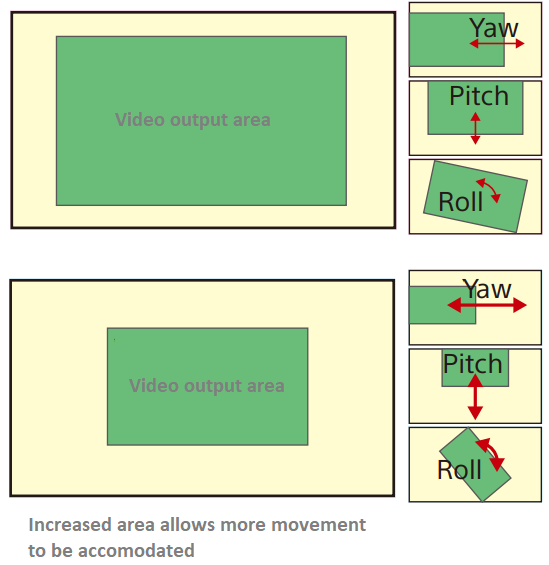
Caption: Super / Super+ modes
The image stabilisation modes supported by the FCB 9500 Series camera are highly optimised for applications that require outdoor deployment at height, and may thus have to deal with vibrations caused by the wind, etc. Among the numerous examples of where this will be advantageous are in construction monitoring (with cameras being placed on cranes) and traffic management systems (where they are located on top of lampposts or installed on the sides of buildings, bridges, etc.). Other high vibration environments that they will be suited to include unmanned offshore drilling (upon which they may be used for ongoing observation), metro stations (where they can be employed for surveillance purposes), industrial processing plants (for safety monitoring), smart agriculture, shipboard equipment and aerial drones. A further potential use case is law enforcement. Accurate number plate recognition will be difficult when a police car is pursuing a suspect. They need to be able to capture good quality images to obtain correct identification, despite the fast moving environment and heavy vibrations involved.
2. 30x enhanced optical zoom
The next feature to discuss is the high degrees of zoom that FCB 9500 Series cameras can deliver. In addition to the 12x digital zoom, these units have a 30x enhanced optical zoom. This enhanced optical zoom is achieved by combining the zoom of an 8M compatible lens with a 4M image sensor. The resulting magnifying effect means that outstanding performance is maintained even when the enhanced optical zoom is fully applied, with no image deterioration or chromatic aberrations being witnessed. Also, as enhanced optical zoom reduces the volume ratio by 45%, the length of the camera module remains short in comparison to competing solutions. Consequently, FCB 9500 Series cameras can be specified for extremely space constrained use case scenarios.
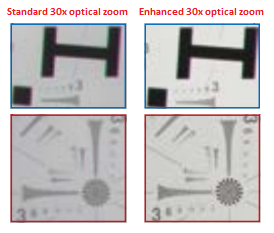
Caption: 30x enhanced optical zoom comparison
There are a multitude of different areas where these zoom capabilities are certain to be of value. As well as enabling highly detailed surveillance work, they will be particularly useful in machine vision applications (ensuring the quality of the products being output from manufacturers’ production lines).
3. Heightened resolution
FCB 9500 Series cameras offer superior resolution and accurate image representation. The next generation autofocus (AF), auto exposure (AE) and auto white balance (AWB) functions help to retain exceptional imaging even at extremely low light levels. This will make these cameras a very attractive prospect when it comes to national security and law enforcement, as they will enable far better quality images to be captured for facial recognition.
It is by drawing all three of the properties just described together that Sony is able to present the market with something truly unique with its FCB 9500 Series. If any one of them was missing, then the outcome would not be as impressive. For instance, if you had the enhanced optical zoom capabilities, but poor stability the vibrations present would be accentuated. Conversely, if you had strong stability but there wasn’t adequate resolution, then capturing fine details would be impossible. There clearly needs to be a synergy between all the different elements.
Find out more about the FCB 9500 Series at https://www.image-sensing-solutions.eu/FCB-New-generation.html